If you have a patch of earth you can grow something in it, as long as you tend it well enough. But for many people who have limited space there is only a yard with a stone surface. No matter what size the yard is, it is the surface quality that limits the space. Of course, a courtyard can be the scene of a container garden,whose containers are sizable stone or brick enclosures in which trees can grow. It can also contain large pots capable of taking shrubs. But few of us have a courtyard. For most of those with just a yard, there is the possibility of using containers, but for some growers pallets are an option.
There are two ways of using pallets. You can make a container from four of them knocked together. Often the pallets are cut down in size to make them more manageable, often they are cut in half, as you do not need great depth of soil for many vegetables. The inside of the pallet box will be lined with plastic or geo-textile to hold in the soil. It is also useful to insert water pipes to take water to the depths of the pallet container.An over-spill pipe placed about five sixths of the way up is also valuable, as all containers are prone to flooding in severe rain storms,and this will prevent complete waterlogging.
Yet pallets often go with pallet collars, which are flexible, hinged containers fitted over pallets to enclose the goods that they carry. Their uniformity of design means that they are intended to be stacked one atop the other,so many gardeners use them to create raised beds. In the picture below you will see how I use pallet collars on my allotment.
Yet pallets can be used vertically. Again the base of the pallet needs to be covered with black plastic or geo-textile, firmly affixed with staples, and the spaces filled with soil. It is then placed on its side,possibly affixed to a wall, and the seedlings inserted into the spaces. Watering can be with a spray. As with all containers the soil nutrients quickly run out, so regular use of fertilizer is necessary, but as I have said before, not in excess.You do not need large amounts. But all containers tend to dry out quicker than the soil does, so you need to keep an eye on their moisture levels.
Heavy plants are unsuitable for this vertical growing, so it is better to grow lighter plants such as the great range of salad vegetables that is available. Keep the heavier vegetables for the containers that lie flat on the ground.



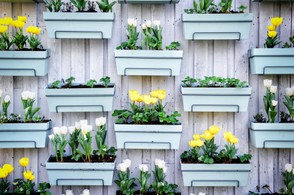
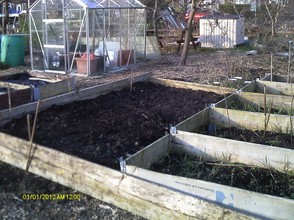

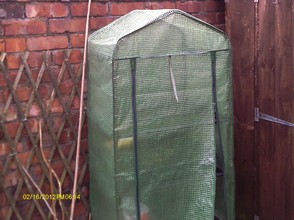
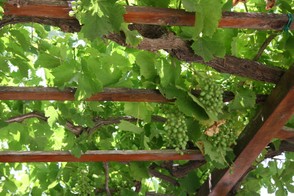
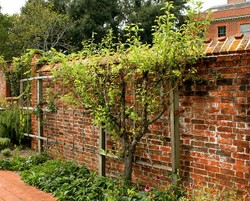

 Women of the Gospelson 10/11/2025
Women of the Gospelson 10/11/2025
 Religious Gardenson 08/25/2025
Religious Gardenson 08/25/2025
 Doctor of the Church: John Henry Newmanon 08/03/2025
Doctor of the Church: John Henry Newmanon 08/03/2025
 Restoring the Palm Houseon 07/16/2025
Restoring the Palm Houseon 07/16/2025

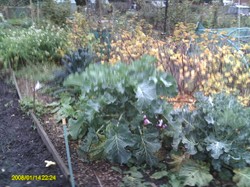
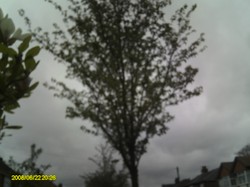
Comments
Yes.
I saw some examples of confined growing today, but more of that in the next article
Thank you for your comment below in answer to my previous observation and question.
So mullein flowers and leaves can be eaten even as mullein seeds cannot!
Might mullein flowers and leaves mix with fruits and greens in fresh salads?
Mullen is not usually eaten, but the seeds are toxic. Leaves and flowers may be eaten.
Thank you for your comment below in answer to my previous observation and question.
Online sources consider mullein soil-decompacting with its long taproot loosening soil thereby aerate- and moisture-able. They also describe it as an ornamental, wild garden-friendly plant. They likewise feature it as herbal medicinal treatment of such minor inconveniences as colds and coughs.
Is mullein edible?
Yes, we have Mullen.
Unexpected plants domiciling in the sidewalk cracks and through the looser stones on the driveway don't bother me except when they dwell in the middle of the driveway, under where the car drives.
Similarly unexpected plants in the front, side, back yards get to grow. My favorites include chicory (Cichorium intybus) and mullein (Verbascum species).
It intrigues me how one day mullein is nowhere, the next day it's everywhere.
Might you have mullein in the British Isles?
Many people dislike plants growing in cracks, but modern gardening thought is more friendly to them.
Your last paragraph advises us that "When you see a plant growing in a crack in the pavement you realize that life will find its space anywhere, it will surge up in the most unlikely places. Ideally, we might want a farm or a large garden, but a small garden is perhaps the most challenging of projects. Making the most of a little, now that's a true gardener."
Twentieth-century Unitedstatesian styles sometimes belittled plants blooming in pavement cracks. Twenty-first-century Unitedstatesian styles sometimes cause such greenery to continue unabated.
The latter dominates the driveway and the sidewalks even as I often enjoy whatever grows in front, side and rear yards to jubilate their complete life cycle.
Might it matter for such greenery to grow on your east-Atlantic pond side? Or would it almost warrant litter-to-be-removed status?
Thanks for sharing these handy tricks.
Pallets break down and decay with time.I found this out when I laid a pallet as the basis of a compost heap. The air flow accelerated decay, but the pallet broke up.